TL:DR – Moths, Lepidoptera, are an incredibly diverse group of insects with some very diverse behaviour. There are some 180,000 known species worldwide with about 18000 of those known as butterflies in the English language, but butterflies are just a class of moth.
There is quite a diversity of behaviour among the moths you see in your trap. The various Yellow Underwings almost all flap wildly around inside until the settle down, but if you disturb them they will flap again, flashing their yellow hindwings.
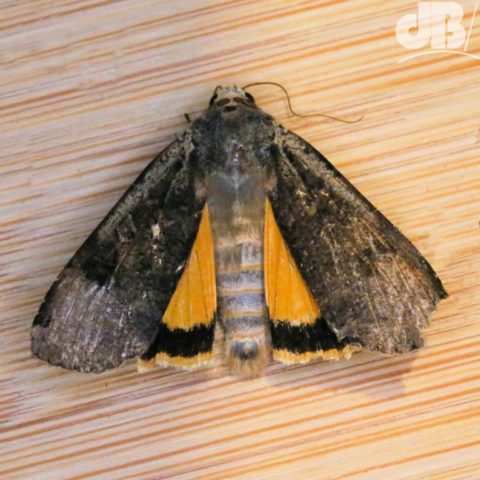
Others are more passive once they have settled down they stay settled down unless disturbed and will generally avoid gripping on to anything other than the original surface on which they landed, Turnip moth is a case in point it seems. But, others will grab on to an offered paintbrush or piece of leaf and happily clamber aboard to be photographed, Angles Shades, for instance, were happy to do this.
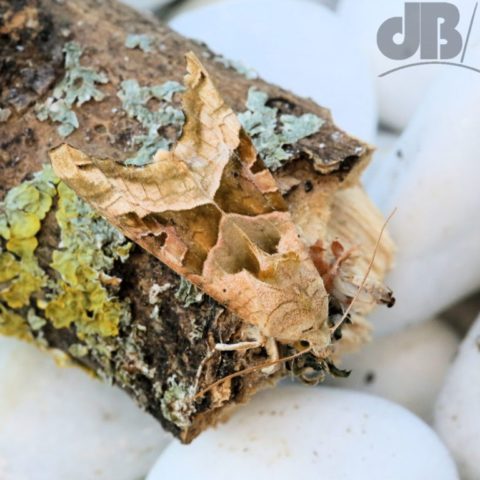
Agitate some moths and if they’re not quite warm enough they will sit still but vibrate their wings, revving their engines as it were before taking flight, I’ve watched this with Flounced Rustic, Straw Underwing, Setaceous Hebrew Character, and the Elephant Hawk-moth, which oscillates audibly.
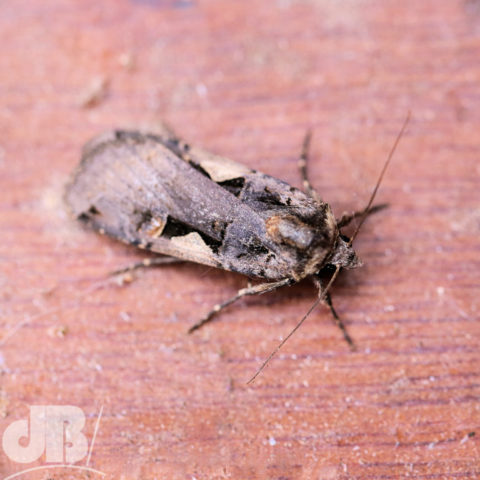
Many of them will, if disturbed, will have a quick flap before landing on their backs and playing dead. If disturbed again they will flap and fly, if they can. I have observed this intriguing behaviour many times in the last few weeks since beginning my mothing career. Most recently, with the nominate form of The Sallow (Cirrhia icteritia), which I’d gently coerced into a jar to photograph and which ended up on its back staring at me. It quickly flipped back over and took flight into the safety of the shrubbery.
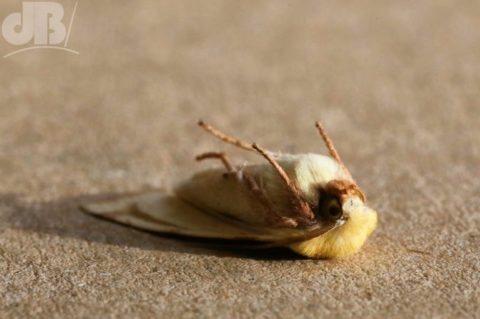
Behaviour that was investigated scientifically not too long ago is even more fascinating than any I have seen in the trap or indeed elsewhere. Most moth species have some form of camouflage that allows them to hide on their favoured vegetation. Apparently, the aforementioned Elephant Hawk-moth likes fuchsia bushes and given how the moth looks and the form of that plant’s flowers, you can see why. The Peppered Moth is said to have evolved to cope with soot-covered trees so that during the Industrial Revolution they became much, much darker and better camouflaged on sooty surfaces. This industrial evolution is most likely #DeceivedWisdom given that this species actually roosts on the underside of leaves where predators would not see them anyway.
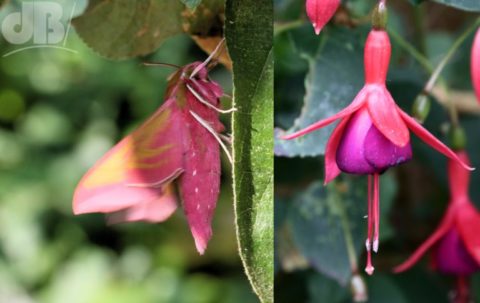
Another species investigated recently shows an incredible ability to adjust its position on a tree bark to make itself pretty much completely invisible to putative predators. One has to wonder, how does the moth know what it looks like from above to do this? I can imagine that there are two ways it might be able to carry out this feat. Perhaps the most sophisticated is that its brain has some kind of “map” of how it looks and the moth shuffles around on a surface until the surface matches how it perceives it looks from above.
A second simpler explanation, which occurred to me is that in fluttering its wings gently it can see the shadow beneath them of where the pattern changes and can then simply look to see or feel whether its pattern matches up with the bark surface on which it finds itself. You can read the research here and here.
I contacted the research team to see how and if their work in this areas has progressed and to ask whether my possible explanation for the behaviour had been investigated. This is what the Prof, Piotr Jablonski, had to say:
We have thought along similar lines but did not do any experiments...We thought the by raising and lowering its wings, the moth may compare the colour and/or pattern on its wingtips (visible when raising them) with the colour or pattern of the bark around the moth. This would require changing the colour of the wingtips (probably visible to some moths - but not all - during the wing-raising behaviour) and for it to be able to control the change of colour of the wing area that is not visible. Maybe another student can pick up on this soon...Changku Kang graduated a few years ago.
One other aspect of moth behaviour that has intrigued people for centuries is why moths are drawn to a flame or other light source. The argument is that they use the moon to navigate at night and candles and other artificial light sources confuse them. I don’t think this is true. I have my own theory, which I have discussed here.